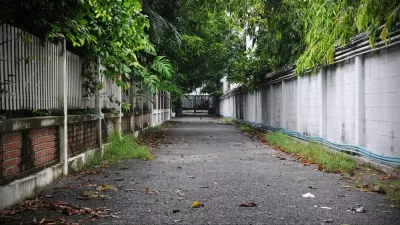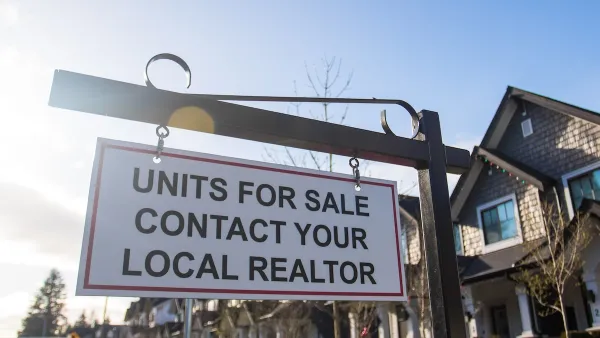City living is back. After half a century of relentless population decline and several false starts at revitalization, residential investment in America's urban centers began to pick up in the mid-1990s.

In the ten years between the 2000 and 2010 decennial censuses, the housing stock in America’s 50 largest central cities grew by 1.5 million dwelling units, or 8.3 percent.[1]
Multiple factors underlie this boomlet. Members of the millennial generation (those born between 1982 and 2004) proved themselves less interested than prior generations in getting married, having children, and moving to the suburbs. Urban crime rates fell significantly. Suburban highways became as congested as their urban counterparts.
As the urban population has grown over the past 25 years, the media has focused on the dangers of gentrification, particularly the displacement of long-time and usually poorer residents. However, behind the newspaper headlines large numbers of urban and suburban residents continued living in neighborhoods where public and private investment had failed to keep pace with the ravages of time, depopulation, or economic decline.
In "Tracking and Explaining Neighborhood Socio-Economic Change in U.S. Metropolitan Areas between 1990 and 2010," a Penn IUR Policy Brief published in conjunction with this article, I use the 1990, 2000, and 2010 censuses to identify the extent and spatial incidence of gentrification and other forms of neighborhood change in large U.S. metropolitan areas between 1990 and 2010. The brief seeks to answer four related questions about neighborhood change processes and outcomes:
- How can commonly-available census data be used to measure gentrification across all U.S. metropolitan areas?
The analysis of the 70 largest U.S. metro areas reveals that decline not upgrading was the dominant form of neighborhood socio-economic change between 1990 and 2010. As of 1990, roughly 20% of the residents of these large metro areas lived in census tracts that would subsequently decline. By contrast, only 6% lived in tracts that subsequently upgraded, and only 3% lived in pre-gentrifying neighborhoods.
- To what degree are neighborhood –level socio-economic changes principally the result of metropolitan-scale factors (such as regional population growth and/or densities) versus more “bottom-up” factors?
Metropolitan-scale factors play a small role in affecting neighborhood change. Overall, they have a bigger effect on suburban neighborhoods than on core areas, and correlate better with decline than with neighborhood upgrading. Population growth at the metropolitan scale serves to destabilize neighborhoods, while the presence of an urban growth boundary acts as a stabilizing force, especially in core areas. Higher densities encourage gentrification activity in core areas while discouraging it in suburban neighborhoods.
- To what degree are neighborhood-level socio-economic changes shaped by the characteristics of individuals and groups (including residents, property-owners, and developers) operating at the neighborhood level?
Neighborhood-scale factors do a better job explaining neighborhood decline than neighborhood upgrading. Among suburban tracts, those most likely to decline were those with higher rents and lower home values. Similar factors account for core area decline. Among core areas, the principal local factors associated with neighborhood upgrading between 1990 and 2010 were low initial incomes, high initial rents, and higher proportions of white and college-educated residents. In suburban neighborhoods, upgrading and gentrification activity were most closely associated with a higher proportion of white residents, higher home values, and low initial incomes
- To what extent are gentrification and other forms of neighborhood change always accompanied by turnover and displacement?
Turnover and displacement are not the same thing, although they usually track together. Turnover includes both voluntary and involuntary moves whereas displacement is inherently involuntary. Measured at the census tract level, turnover rates in 2010 were slightly higher in declining tracts than in upgrading or gentrifying tracts. Further controlling for the socio-economic composition of the neighborhood causes the connection between recent turnover rates and neighborhood change to disappear altogether. This suggests that the relationship between neighborhood upgrading or decline and displacement is neither systematic nor widespread.
The media’s current fascination with gentrification notwithstanding, it is neighborhood decline—in both cities and suburbs—that remains the dominant form of neighborhood change, and the one that local urban development programs should continue to focus on.
Center city planners seeking to reverse neighborhood decline and promote upgrading should focus their efforts on older and walkable neighborhoods with diverse and aspirational populations. Those hoping to anticipate and stem decline should keep a close eye on more distant neighborhoods, those with proportionately more multi-family housing, and those with large populations already in poverty.
For more information, read the full policy brief, "Tracking and Explaining Neighborhood Socio-Economic Change in U.S. Metropolitan Areas between 1990 and 2010." The original full working paper is also available on the Penn IUR website.
John D. Landis is a Penn IUR Faculty Fellow and Professor of City and Regional Planning at the Penn School of Design.This article is adapted from “Tracking and Explaining Neighborhood Socio-Economic Change in U.S. Metropolitan Areas between 1990 and 2010,” originally published in Housing Policy Debate Volume 25 (2015), and now available as a Penn IUR Policy Brief.
References
Freeman, Lance and F. Braconi. 2004. Gentrification and displacement: New York City in the 1990s. Journal of the American Planning Association. 70:39-52.
Ellen, Ingrid Gould and Katherine O’Regan. 2012. Gentrification: Perspectives of Economists and Planners. in The Oxford Handbook of Urban Economics and Planning. Nancy Brooks, Kieran Donaghy, and Gerrit Knaap, editors. New York: Oxford University Press.
Jargowsky, Paul. 1997. Poverty and Place: Ghettos, Barrios, and the American City. New York: Russell Sage Foundation.
Kneebone, Elizabeth and Alan Berube. 2013. Confronting Suburban Poverty. Washington, D.C.: The Brookings Institution.
Lucy, William and David Phillips. 2006. Tomorrow’s Cities, Tomorrow’s Suburbs. Chicago: Planners Press.
Ramsey, Kevin. 2012. Residential Construction Trends in America’s Metropolitan Regions. U.S. Environmental Protection Agency.
Sampson, Robert. 2012. Great American City: Chicago and the Enduring Neighborhood Effect. Chicago: The University of Chicago Press.
Wyly, Elvin and D. Hammels. 1999. Islands of decay in seas of renewal: Housing policy and the resurgence of gentrification. Housing Policy Debate. 10:711-772.
FULL STORY: The Reality of Neighborhood Change: Planners Should Worry About Decline

Planetizen Federal Action Tracker
A weekly monitor of how Trump’s orders and actions are impacting planners and planning in America.

San Francisco's School District Spent $105M To Build Affordable Housing for Teachers — And That's Just the Beginning
SFUSD joins a growing list of school districts using their land holdings to address housing affordability challenges faced by their own employees.

The Tiny, Adorable $7,000 Car Turning Japan Onto EVs
The single seat Mibot charges from a regular plug as quickly as an iPad, and is about half the price of an average EV.

Seattle's Plan for Adopting Driverless Cars
Equity, safety, accessibility and affordability are front of mind as the city prepares for robotaxis and other autonomous vehicles.

As Trump Phases Out FEMA, Is It Time to Flee the Floodplains?
With less federal funding available for disaster relief efforts, the need to relocate at-risk communities is more urgent than ever.

With Protected Lanes, 460% More People Commute by Bike
For those needing more ammo, more data proving what we already knew is here.
Urban Design for Planners 1: Software Tools
This six-course series explores essential urban design concepts using open source software and equips planners with the tools they need to participate fully in the urban design process.
Planning for Universal Design
Learn the tools for implementing Universal Design in planning regulations.
Smith Gee Studio
City of Charlotte
City of Camden Redevelopment Agency
City of Astoria
Transportation Research & Education Center (TREC) at Portland State University
US High Speed Rail Association
City of Camden Redevelopment Agency
Municipality of Princeton (NJ)





























